Play starts getting more fun since your baby is more alert and begins to become an explorer and investigator versus a passive play mate. At this age, baby starts to move too and, from here on out, won’t stop!
A 4 to 6 month old baby is quite a charmer! He loves to smile, make silly noises at you (or anyone for that matter), to babble, and starts using his voice to get a reaction! This is also the time when physical development gets “rolling” at an amazing rate. Baby begins to prop sit (with arms or support), push up more on arms in tummy time and begins to roll purposefully. Reaching becomes more and more accurate since eye hand coordination has improved. Baby will reach for anything (ask any older sibling) and likely put most any object into his mouth to explore it. Moving an object from one hand to the next will soon follow. Around this time, most babies begin to sleep better so parents get to come back from the land of Sleep Deprivation (even if it’s short-lived). With so many big changes, how can you maximize your play with this amazing little one? Below are a few ideas organized by thinking of baby’s senses!

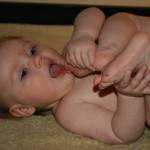
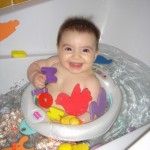
Touch: Baby will love to experience different textures on his hands, face, and body. Try introducing toys, blankets, stuffed animals with different textures. Try putting on simple white gloves and washing your baby at bath time. It provides a different sensation and helps you hold on to a slippery baby! Continue with naked baby time and body exploration. Try playing games like “where are your toes?” and then touch his toes (either with your hands or his) and say “Toes!”
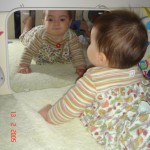
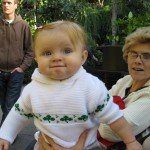
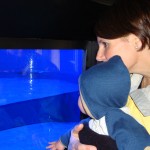
Sight: Baby is ready to check out all of the new colors he can now see. He now distinguishes between new and familiar faces which may mean a bit more clinginess to his primary caregiver. Make sure you point out things and talk about the environment surrounding him, encouraging exploration by holding him up on your shoulder. Mirror Play in a variety of positions (tummy, supported sitting) to let him see himself is always fun. Try “Baby, Do What I do!” Make various facial expressions (open mouth wide, puff cheeks out, stick out tongue) and see if he tries to imitate you. Peek-a-boo is a great game to play with you, siblings, toys, etc. Baby will need help initially but, pretty soon, he will have this tricky game all figured out!
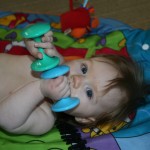



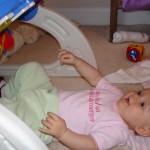
Sound: Rattles, maracas, and very simple cause and effect toys (with your help initially) will be quite fun for baby. Shake a rattle behind your baby’s head and let him or her turn and grab it. Baby still loves YOU the best so use your voice! Make silly sounds and mimic his sounds . . . the sillier the better! One of the cutest things I get to see these days are baby and his older brother “talking”! Make sounds for your baby. Clap your hands (help him clap his too because this will happen very soon) and help baby bang two objects together. Play music too. What about “zerberts”? Isn’t blowing on your baby’s chubby baby tummy the best? In our house, that crazy sound always gets a laugh! Remember, many sounds in the environment will be new and novel like a dog barking, bell ringing, music, etc. so be respectful!
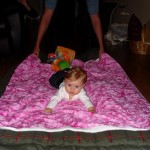

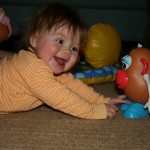
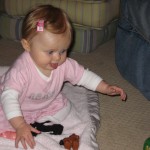

Movement: Dance with baby. Hold your baby in different ways (tucked in front, tummy, side) than your standard and dance away, sing, smile – in front of a mirror is even better! Or, make it a movement activity for the entire family! Always check on baby every 30 to 60 seconds by “freezing” or “waiting.” This gives your little one a break to let him process the new information and reset himself in a way. Give baby plenty of time on the floor each day. I know this can be difficult but this floor time is one of the most essential parts of development. It is the perfect surface and the perfect time for baby to spend time on his tummy, back, supported sitting, rocking on hands and knees all to build strength and skill to progress toward rolling, crawling, and walking. As this stage progresses, try and have baby equal time on all four sides of the body.
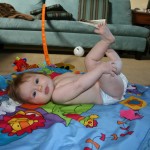
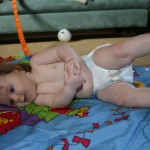
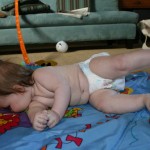
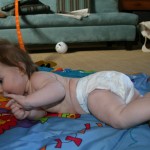

Other Helpful Hints: To help your baby focus, put out only one or two toys at a time. Be respectful of all that baby is learning and balance stimulation with plenty of quiet time. And, of course, be respectful of baby’s cues that he needs space or a break. Can you imagine having to learn so many things in such a short time? So many things are new as they move, PLAY, and grow!
Enjoy the magic and the wonder!
